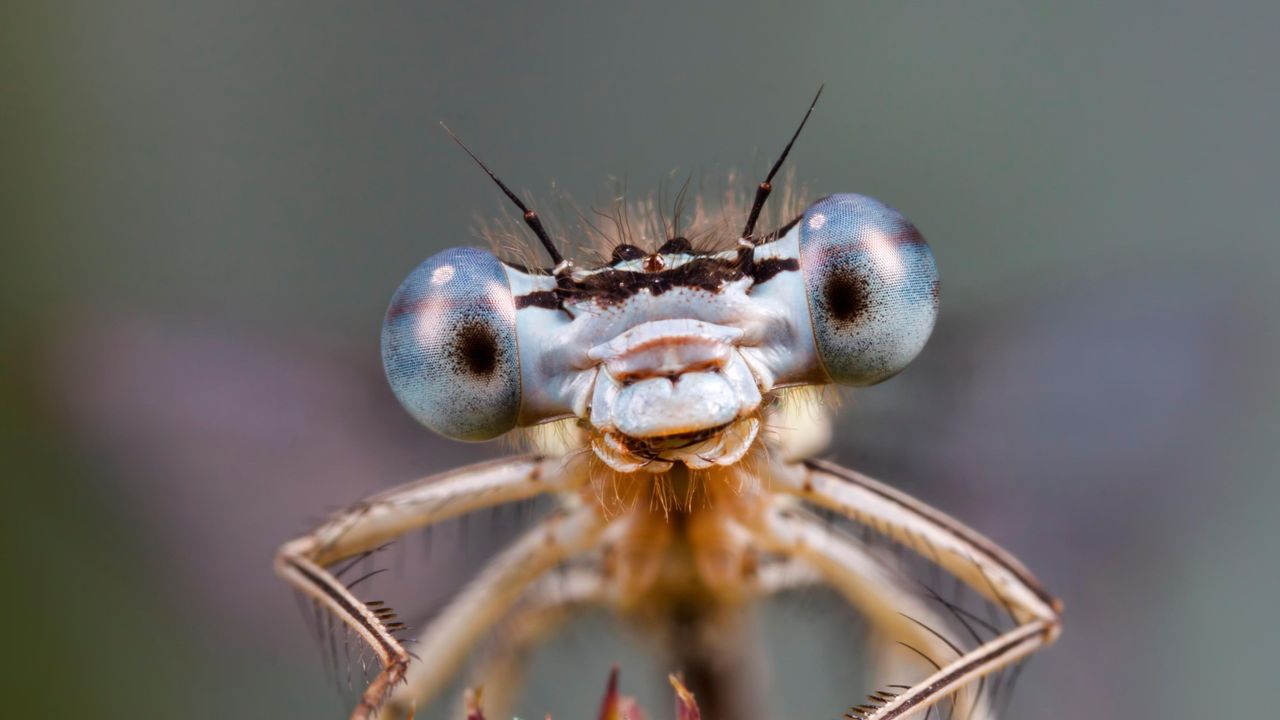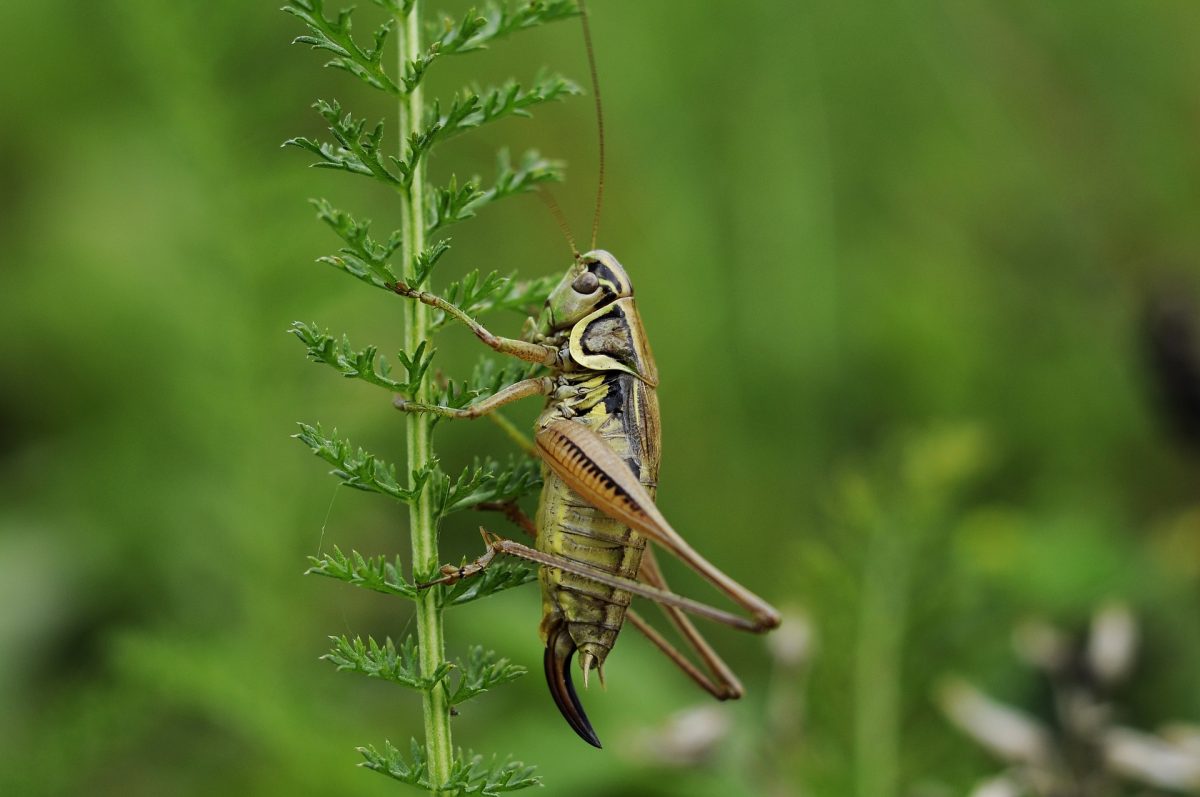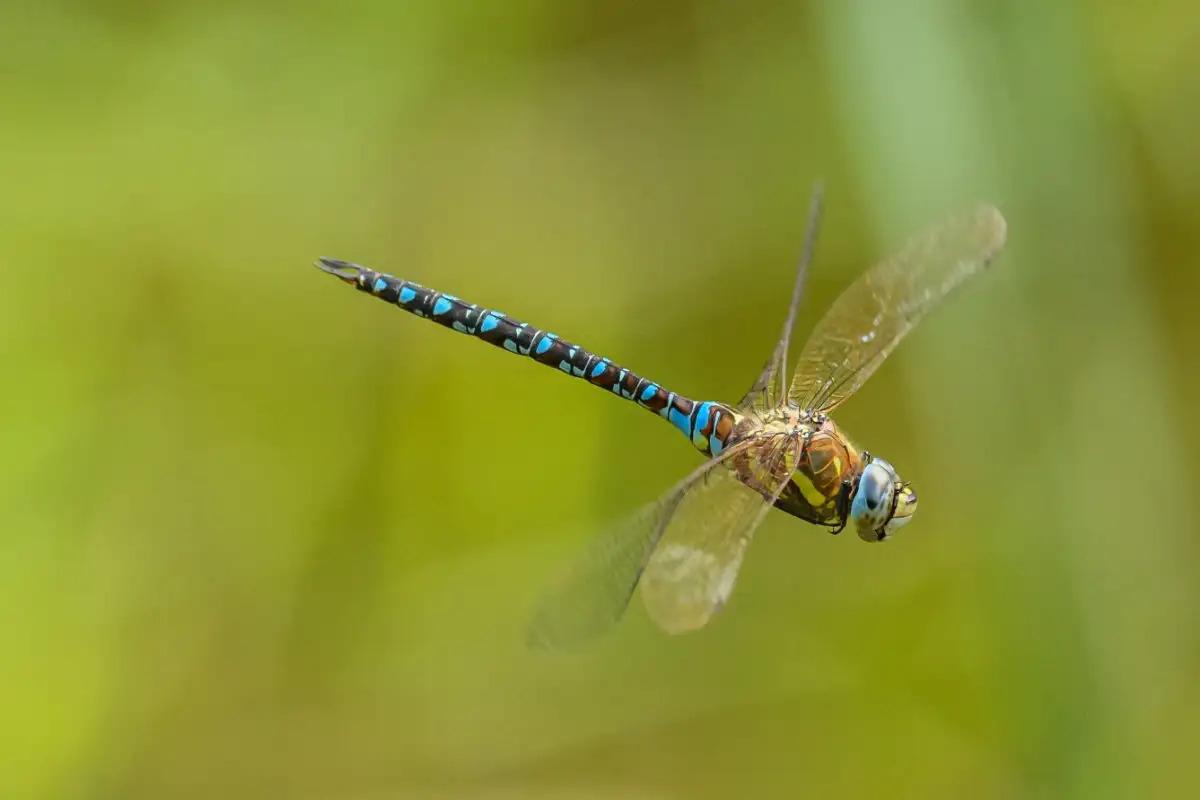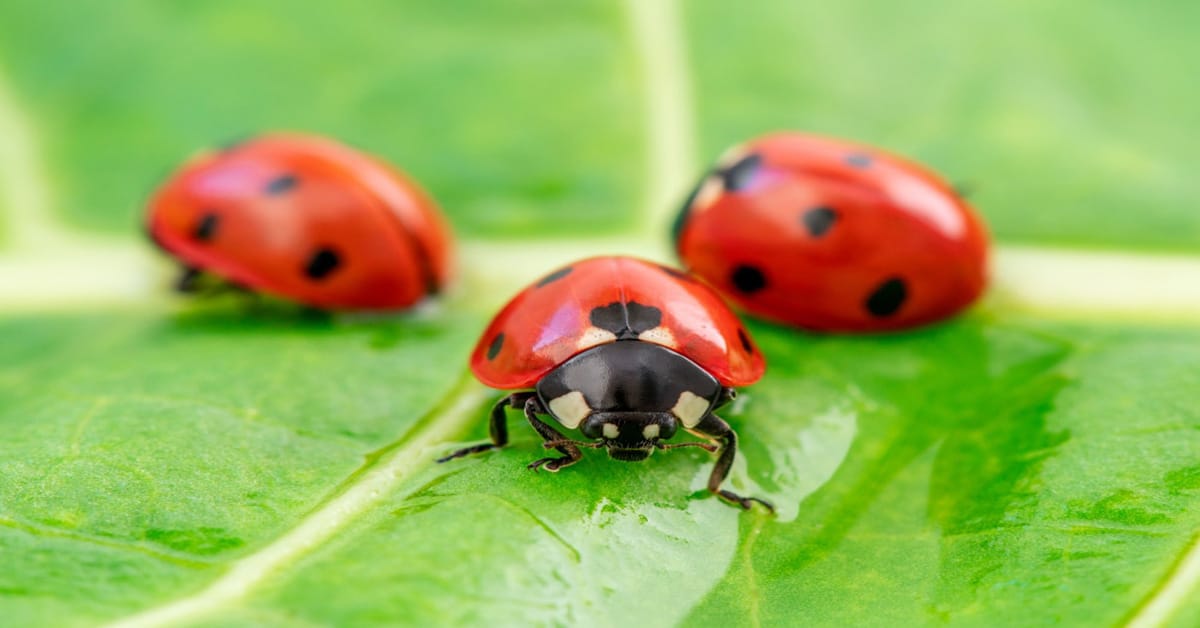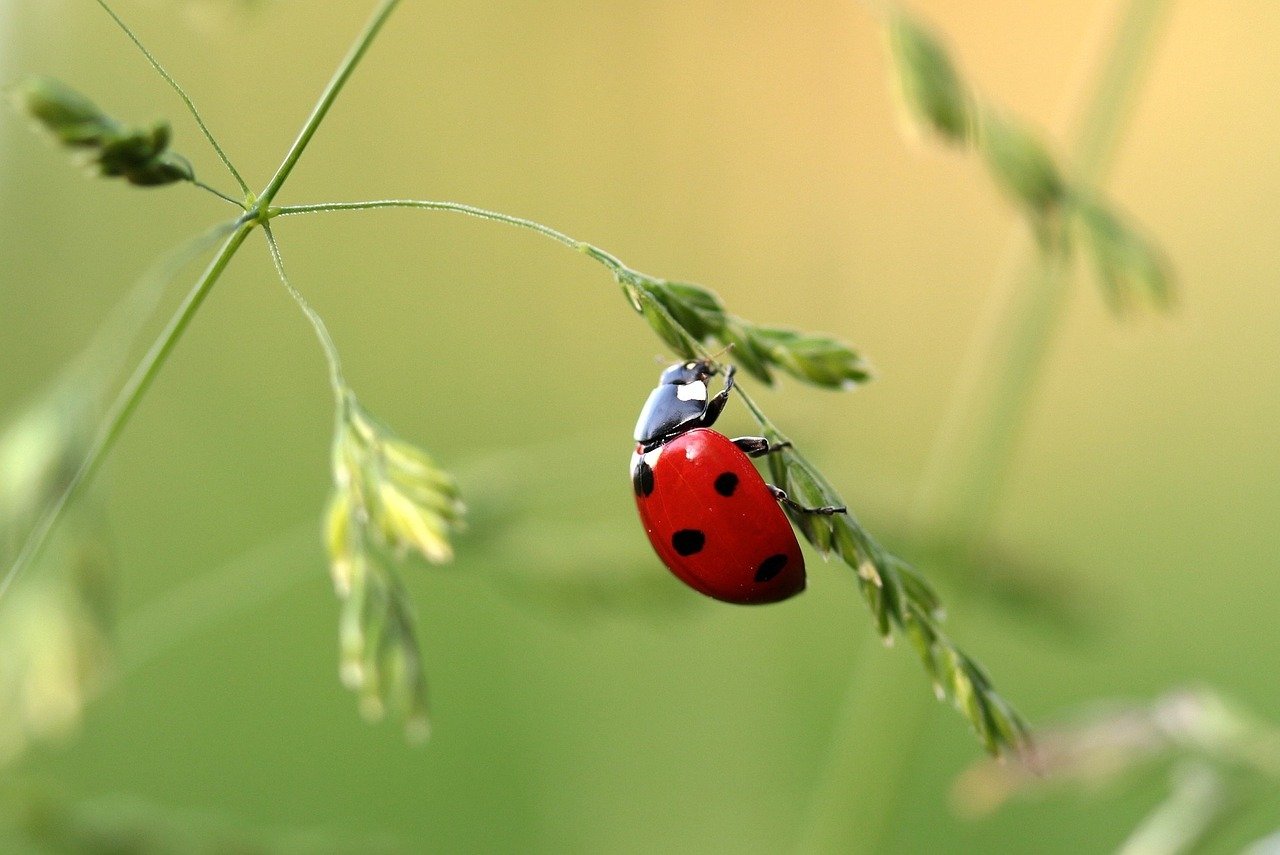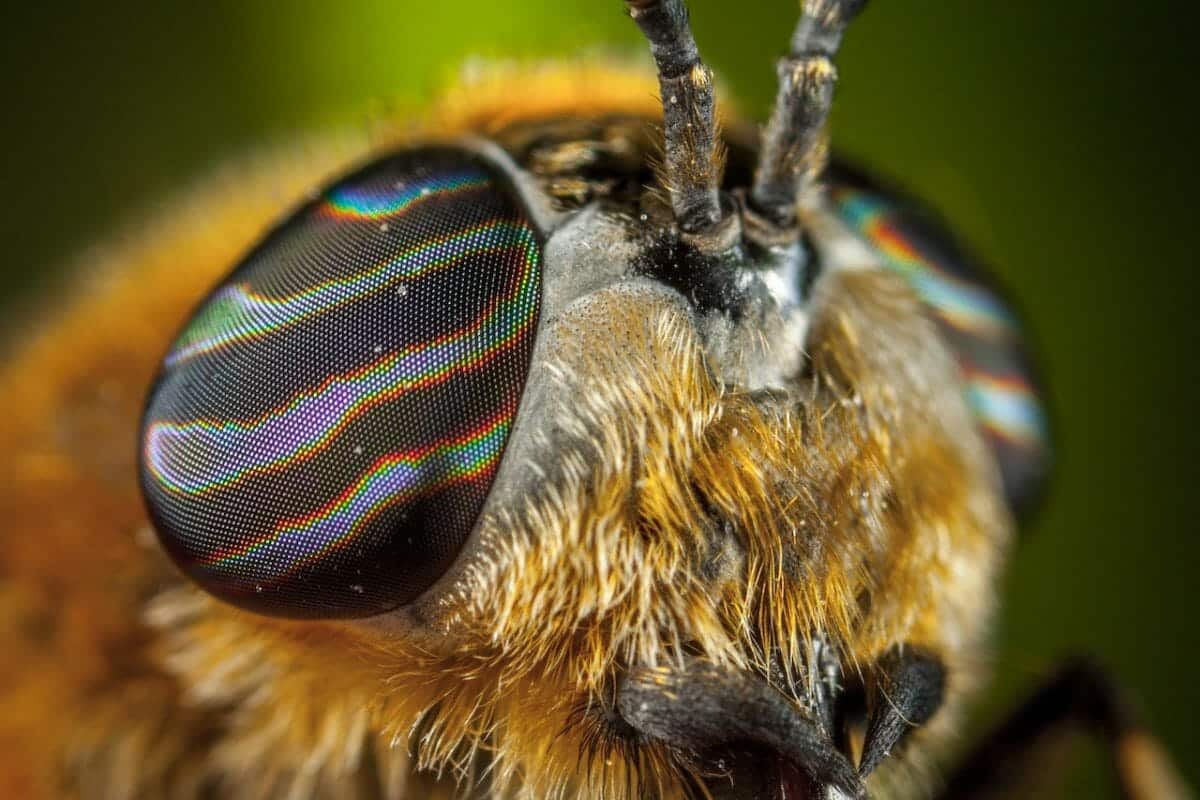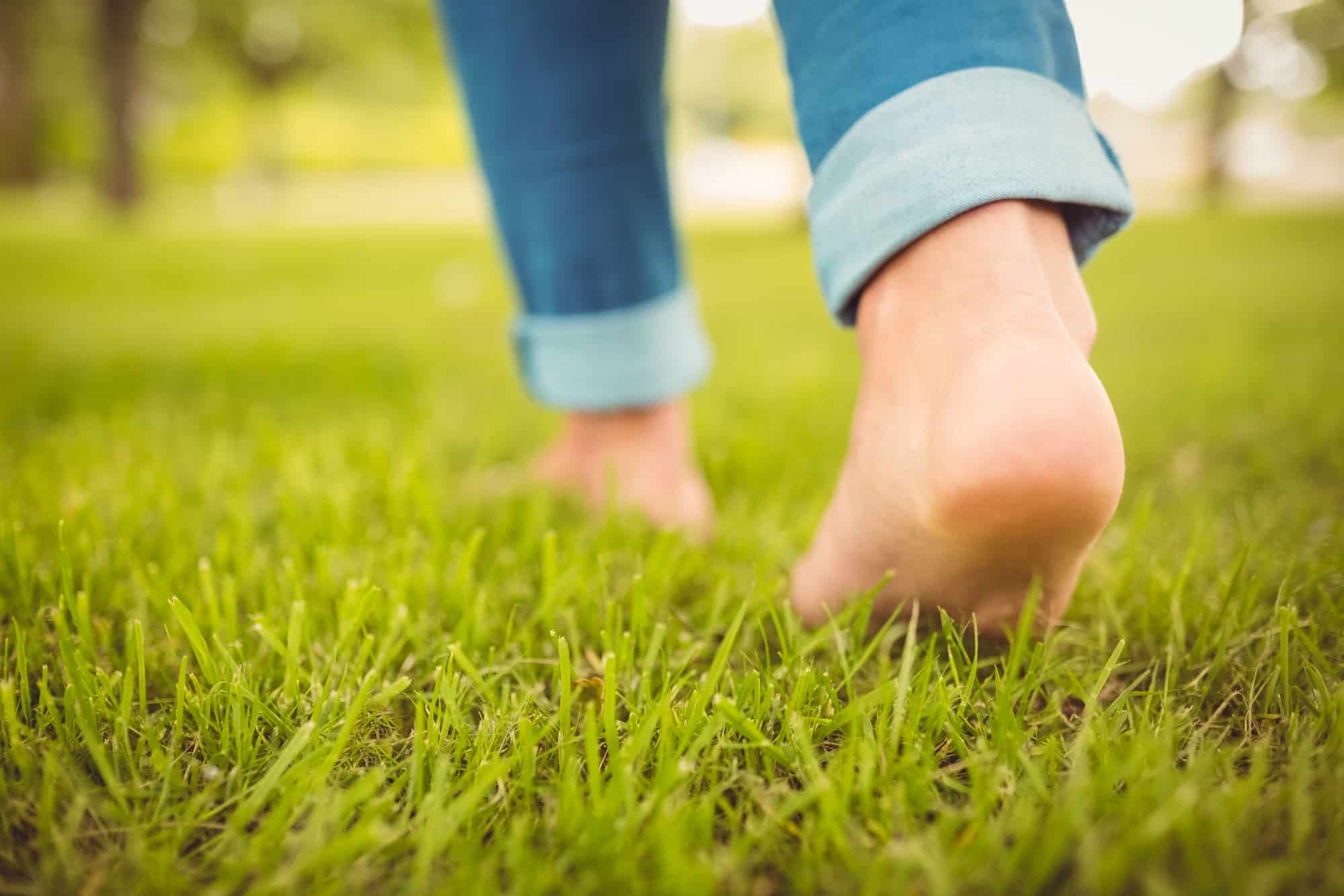Home>Gardening News and Trends>Latest News>How Do Insects Walk On Walls
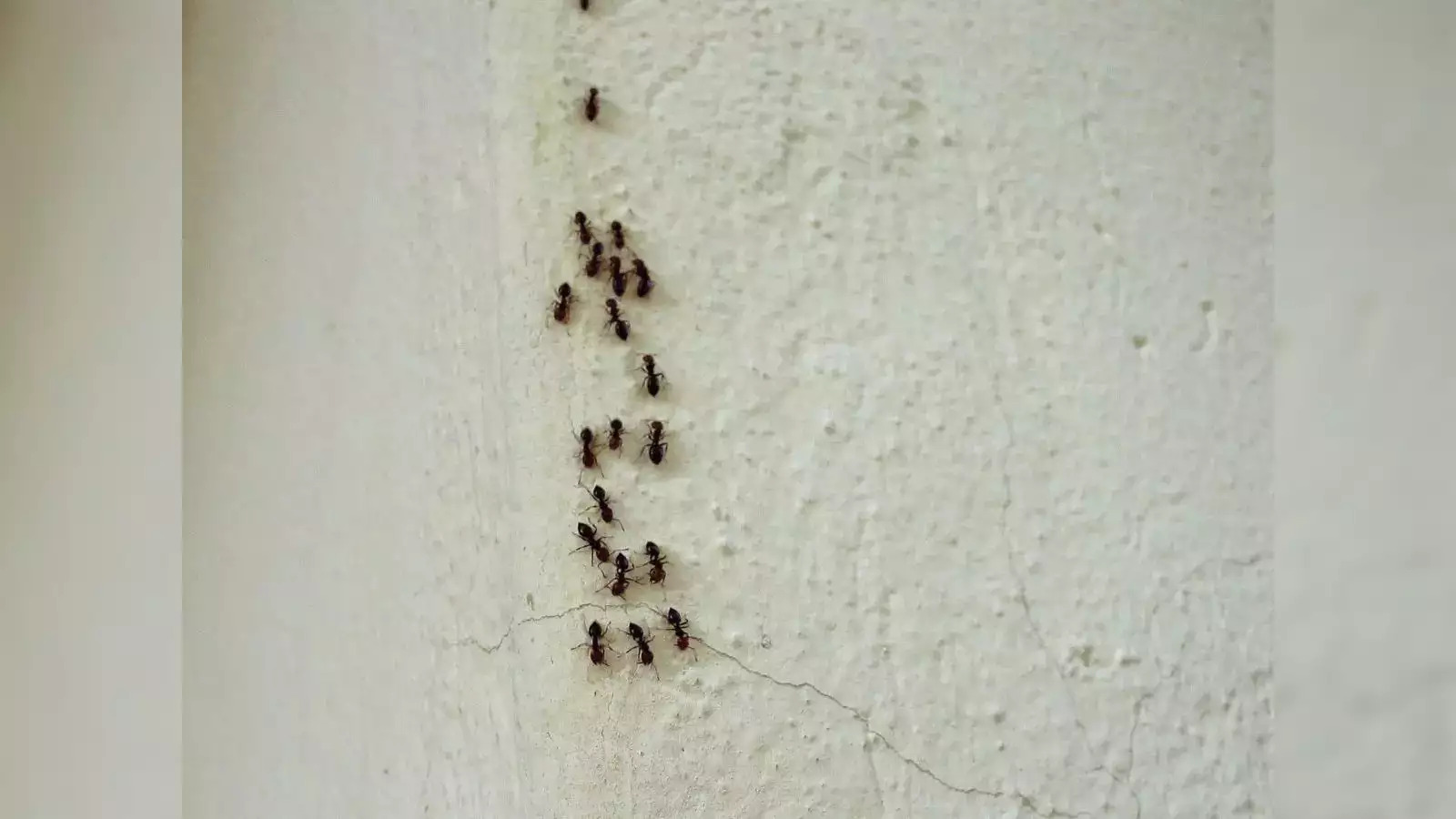

Latest News
How Do Insects Walk On Walls
Modified: January 22, 2024
Discover the Latest News on How Insects Walk on Walls. Explore the Fascinating Mechanics Behind Their Impressive Ability in our Informative Article.
(Many of the links in this article redirect to a specific reviewed product. Your purchase of these products through affiliate links helps to generate commission for Chicagolandgardening.com, at no extra cost. Learn more)
Table of Contents
- Introduction
- Surface Adhesion in Insects
- Mechanisms of Insect Adhesion
- Structures Involved in Insect Walking
- Capillary Action: The Role of Fluid Adhesion
- Surface Microstructures and Their Effect on Insect Adhesion
- Adhesive Secretions and Their Contribution to Insect Walking
- Comparison of Insect Walking Abilities to Human-Made Adhesion
- Conclusion
Introduction
Insects are fascinating creatures that have evolved a variety of impressive abilities to adapt to their environments. One of the most intriguing skills possessed by many insects is their ability to walk on walls and other vertical surfaces with ease. Unlike humans, who rely on friction and grip to maintain balance and move on surfaces, insects seem to defy gravity as they effortlessly traverse walls and ceilings.
This remarkable feat has captured the attention of scientists and researchers, who have sought to unravel the secrets behind insect adhesion. By understanding how insects accomplish this feat, scientists hope to gain valuable insights for the development of new technologies, such as adhesives that can mimic the remarkable abilities of insects.
Surface adhesion in insects is a complex phenomenon that involves a combination of physical and biological mechanisms. It is not simply a matter of sticky feet or claws, but rather a sophisticated interplay of forces and structures that allow insects to stick to surfaces and move effectively.
In this article, we will explore the fascinating world of insect walking and delve into the mechanisms and structures that enable insects to traverse walls and other vertical surfaces. We will also examine the different types of adhesion utilized by insects, such as capillary action, surface microstructures, and adhesive secretions. Finally, we will compare the remarkable abilities of insects with the adhesion technologies developed by humans.
Join us on this journey as we uncover the extraordinary abilities of insects and gain a deeper appreciation for the wonders of the natural world.
Surface Adhesion in Insects
Surface adhesion in insects refers to their ability to attach to and move on vertical surfaces, such as walls, glass, and even upside-down on ceilings. While humans rely mainly on friction and grip to navigate surfaces, insects possess unique adaptations that allow them to adhere to surfaces and overcome the force of gravity.
Unlike adhesive materials like glue or tape, insect adhesion does not involve the use of external substances. Instead, insects rely on a combination of physical and biological mechanisms to achieve surface adhesion. These mechanisms enable them to walk on various surfaces, even those that are smooth or irregular.
One of the key factors that contribute to insect adhesion is the distribution of forces across their body. Insects have a large number of legs, often six or more, which means that their weight is evenly distributed among multiple points of contact. This distributed load helps to increase the overall adhesion to the surface, making it easier for insects to cling to vertical or inverted surfaces.
Furthermore, the microstructures found on the feet and legs of insects play a crucial role in surface adhesion. These structures, often referred to as setae or bristles, are tiny hair-like protrusions that allow insects to create a type of mechanical bond with the surface they are walking on. The setae increase the surface area of contact between the insect’s feet and the substrate, resulting in greater adhesion.
In addition to mechanical adhesion, many insects also take advantage of fluid adhesion to enhance their grip on surfaces. Some insects are capable of producing adhesive secretions, often in the form of liquids or gels, from specialized glands located on their feet or legs. These secretions contain chemical components that help to increase adhesion by creating molecular attractions between the insect’s feet and the surface.
In the next sections, we will explore the specific mechanisms and structures involved in insect adhesion, providing a deeper understanding of how insects are able to walk on walls and other vertical surfaces.
Mechanisms of Insect Adhesion
The ability of insects to adhere to vertical surfaces is made possible through the interplay of various mechanisms. These mechanisms allow insects to overcome gravity and maintain their grip while navigating different surfaces.
One of the primary mechanisms of insect adhesion is the use of setae or bristles on their feet and legs. These microstructures act like tiny hooks or barbs that physically latch onto the uneven surface of the substrate. The high density and specific arrangement of these setae contribute to their effectiveness in providing adhesion. Additionally, the flexibility of the setae allows them to conform to the irregularities of the surface and maximize the contact area, increasing the grip.
In addition to static friction provided by the setae, insects also utilize dynamic friction to maintain their adhesion. As insects move, they generate friction forces between their legs and the surface, which create a “sticky” effect. This dynamic friction, combined with the adhesion from the setae, helps insects maintain their grip as they walk on walls or ceilings.
Another important mechanism of insect adhesion is capillary action. This phenomenon occurs when liquid molecules move along a surface due to the attractive forces between the liquid and the surface. Some insects, like certain beetles, have the ability to “generate” their own liquid-based adhesion. They produce specialized adhesive secretions that form small meniscus bridges between their feet and the surface. This capillary adhesion provides additional support and enhances their ability to cling to surfaces.
Furthermore, electrostatic forces play a role in insect adhesion. The surfaces of both insects and the substrate they walk on can acquire electrical charges. These opposite charges create attractive forces, known as Van der Waals forces, which contribute to the adhesive bonding between the insect’s feet and the surface. Electrostatic forces are particularly useful when insects are walking on smooth or non-porous surfaces, where mechanical adhesion might not be as effective.
By combining these different mechanisms, insects have evolved a remarkable ability to adhere to surfaces and move effectively in various environments, whether it be climbing vertical walls or exploring intricate structures. Understanding these mechanisms not only deepens our appreciation for the wonders of insect locomotion but also inspires the development of innovative adhesion technologies for human applications.
Structures Involved in Insect Walking
The remarkable ability of insects to walk on walls and other vertical surfaces is made possible by their intricate anatomical structures. These structures provide insects with the necessary adaptations to navigate various terrains and overcome gravitational forces.
One of the key structures involved in insect walking is their legs. Most insects have six legs, each consisting of several segments, including the coxa, trochanter, femur, tibia, and tarsus. These segments are connected by joints, allowing for flexibility and range of motion. The legs are responsible for providing support and generating the forces needed for walking and adhesion to surfaces.
At the end of each leg, insects have specialized feet or tarsi that are equipped with an array of microscopic structures, such as setae and claws. These structures play a significant role in adhesion and grip. The setae, as mentioned earlier, act like tiny hooks that grab onto surface irregularities, increasing the contact area and enhancing adhesion. The claws, on the other hand, hook into the surface and provide additional support during locomotion.
In addition to setae and claws, many insects have specialized pads or pulvilli on their feet. These pads contain adhesive secretions that enhance adhesion to the surface. The secretions may consist of sticky compounds or may rely on capillary action to create meniscus bridges between the insect’s foot and the substrate.
Furthermore, the tarsi of some insects possess structures called arolium or adhesive pads. These pads act as suction cups and rely on the pressure difference between the pad and the surface to create adhesion. This mechanism is particularly effective on smooth or non-porous surfaces.
In addition to the structures on their legs and feet, certain insects also have specialized adaptations on other parts of their bodies that aid in walking. For example, some insects have spines or bristles on their abdomen or wings that provide additional support and stability when navigating surfaces.
By utilizing these complex and specialized structures, insects can efficiently walk on walls, ceilings, and other vertical surfaces. Through the coordination of their legs and the intricate adaptations of their feet, insects can overcome the challenges posed by gravity and explore their environments with agility and precision.
Capillary Action: The Role of Fluid Adhesion
When it comes to walking on walls and other vertical surfaces, insects often employ the fascinating phenomenon known as capillary action. Capillary action refers to the movement of a liquid within a narrow space, such as a tube or a microscopic gap, due to the adhesive and cohesive forces between the liquid and the surrounding surfaces.
Some insects, such as certain beetle species, possess specialized adhesive secretions that play a crucial role in capillary action-based adhesion. These secretions, produced by glands located on their feet or legs, act as a fluid glue or adhesive gel. The secretions spread over the surface of the insect’s legs and form tiny meniscus bridges between the insect’s feet and the substrate.
These meniscus bridges, created by the surface tension of the adhesive secretions, allow insects to adhere to surfaces. The liquid molecules within these menisci form attractive forces with the surface of the substrate, resulting in a capillary adhesion effect. This capillary action provides insects with an additional adhesive force to aid in their ability to walk on vertical or inverted surfaces.
Capillary action is particularly beneficial for insects when walking on smooth or non-porous surfaces where mechanical adhesion, such as setae and claws, may have limited effectiveness. The adhesive secretions create a fine layer of liquid that fills the microscopic gaps or surface irregularities, maximizing the contact area and improving adhesion.
Insects that rely on capillary action for adhesion can manipulate this phenomenon for controlled movement. By adjusting the secretion on their legs or by modulating the contact angle of the meniscus, they can regulate the strength of adhesion and easily detach from the surface when needed. This adaptability allows insects to navigate complex terrains and choose their footholds strategically.
Capillary action is not limited to adhesive secretions on the legs of insects. Some insects also take advantage of additional structures, such as grooves or channels, on their bodies that facilitate capillary movement. These structures guide the flow of liquid, enhancing adhesion and stability.
The utilization of capillary action-based adhesion in insects showcases the remarkable diversity of strategies employed in nature. By studying and understanding the mechanisms behind these structural adaptations and fluid behaviors, scientists can draw inspiration for developing new adhesive materials with applications ranging from building technology to medical procedures.
Surface Microstructures and Their Effect on Insect Adhesion
The ability of insects to walk on walls and vertical surfaces is greatly influenced by the microscopic structures found on their feet and the surface they are walking on. These surface microstructures play a crucial role in insect adhesion, allowing them to cling to various surfaces and overcome gravitational forces.
Insects have evolved a wide range of microstructures on their feet, including setae, spatulae, and adhesive pads. These structures are present in different configurations depending on the species and provide insects with enhanced adhesion capabilities.
One of the most common types of microstructures found on insect feet is setae. Setae are tiny, hair-like projections that cover the surface of the feet and legs. These setae can take various forms, such as spatulate (flattened), branched, or hooked. The diversity in setae shapes allows insects to adapt to different types of surfaces and optimize their adhesion.
Spatulate setae, characterized by their flattened shape and expanded tips, are particularly effective in creating strong adhesive bonds. The enlarged tips of spatulate setae increase the surface area of contact with the substrate, allowing for greater adhesion. The close proximity of the setae tips to the surface ensures a strong interaction and enables insects to grip onto surfaces even with minimal contact.
Another type of microstructure found on insect feet is the adhesive pads or pulvilli. These pads are composed of densely packed setae, often with specialized shape and composition. The adhesive pads can conform to the surface irregularities, increasing the contact area and enhancing adhesion. Additionally, the adhesive pads can generate van der Waals forces, which are attractive forces between molecules, further improving friction and adhesion.
The surface microstructures of the substrate, such as the roughness and texture, also play a significant role in insect adhesion. Surfaces with microscopic irregularities provide more contact points for the insect’s microstructures to engage with, resulting in stronger adhesion. Smooth surfaces, on the other hand, pose a challenge for insects, as mechanical adhesion alone may not be sufficient.
Some insects have evolved the ability to adapt to smooth surfaces by using a combination of microstructures and fluid adhesion. The setae on their feet may secrete adhesive fluids that enable capillary adhesion, as discussed in a previous section. This combination of fluid adhesion and microstructures allows insects to traverse even the smoothest of surfaces with relative ease.
The intricate interplay between the microstructures on the feet of insects and the microstructures on the surface they walk on is a testament to the remarkable adaptations found in nature. By studying these surface microstructures and their impact on insect adhesion, researchers can gain valuable insights for the development of advanced adhesion technologies and materials.
Adhesive Secretions and Their Contribution to Insect Walking
Adhesive secretions are a fascinating and essential component of insect walking on walls and other vertical surfaces. These specialized secretions, produced by glands located on the feet or legs of insects, play a crucial role in enhancing adhesion and allowing insects to navigate various terrains.
Adhesive secretions serve multiple purposes in insect locomotion. They can act as a fluid glue, increasing the contact area between the insect’s feet and the substrate. This enhances adhesion and provides a stronger grip, especially on smooth or non-porous surfaces where mechanical adhesion alone may be limited.
The composition of adhesive secretions varies across different insect species. Some secretions contain sticky compounds or resins that generate adhesive forces through material adhesion. These compounds adhere to the surface, creating molecular attractions and increasing the friction between the insect’s feet and the substrate.
In other cases, adhesive secretions may rely on capillary action to aid in adhesion. The secretions form small meniscus bridges between the insect’s feet and the surface. These bridges enhance the adhesion by creating surface tension forces that help the insect cling to the substrate, even on smooth and non-porous surfaces.
Additionally, adhesive secretions can act as lubricants, reducing the friction between the insect’s feet and the surface. This facilitation of movement allows insects to walk more smoothly and efficiently, particularly on surfaces that may otherwise impede their progress.
Some insects can control the production and distribution of their adhesive secretions, allowing them to regulate their adhesion as needed. They can modulate the amount of secretion, adjusting the stickiness of their feet to match the surface they are walking on. This adaptability is vital for insects to traverse different environments and choose appropriate footholds.
Adhesive secretions also have antimicrobial properties, which help protect insects from harmful bacteria and fungi. The secretions contain compounds that inhibit the growth of microorganisms, preventing infections or damage to their feet and legs.
It is worth noting that adhesive secretions are not the sole mechanism of adhesion for insects. They often work in conjunction with other structures, such as setae and claws, to provide a comprehensive adhesion system that allows insects to walk on walls and other vertical surfaces.
By studying the adhesive secretions of insects and their contribution to walking, researchers can gain insights into the development of novel adhesives and biomimetic materials. The remarkable capabilities of insects serve as an inspiration for the creation of advanced adhesion technologies with various applications in industries such as robotics, material science, and biomedical engineering.
Comparison of Insect Walking Abilities to Human-Made Adhesion
The walking abilities of insects, particularly their remarkable adhesion on walls and vertical surfaces, have captivated scientists and inspired the development of human-made adhesion technologies. While humans have invented various types of adhesives and gripping mechanisms, they still pale in comparison to the efficiency and versatility of insect walking.
One of the key differences lies in the fundamental mechanisms of adhesion. Human-made adhesives often rely on chemical interactions, such as the bonding of molecules or the use of strong glues. These adhesives tend to be dependent on specific surface conditions and may not work as effectively on different types of materials or in extreme environments.
In contrast, insects have evolved a diverse range of adhesion mechanisms that can adapt to different surfaces and conditions. Whether it’s the mechanical grip provided by setae and claws, the capillary action of adhesive secretions, or the use of electrostatic forces, insect walking encompasses a multi-faceted and dynamic approach to adhesion.
Furthermore, insects exhibit impressive abilities to traverse complex terrains with agility and precision. They can navigate irregular or rough surfaces with ease, utilizing the microstructures on their feet to their advantage. In contrast, humans often struggle to maintain adhesion on surfaces that deviate from standard flat or clean configurations.
Another aspect where insects surpass human-made adhesion technology is in their ability to self-clean and prevent contamination. Insects have specialized grooming behaviors and structures on their legs that allow them to remove debris or detach from contaminants. This self-cleaning ability ensures the longevity and effectiveness of their adhesion, even in challenging environments.
While humans have made significant advancements in developing adhesives and gripping systems, there is still much to learn from the intricacies of insect adhesion. Scientists continue to study and draw inspiration from the unique structures, mechanisms, and materials found in insects in order to improve human-made adhesion technologies.
By emulating the strategies employed by insects, researchers have made progress in creating biomimetic adhesives and materials. These biomimetic approaches, inspired by the natural world, aim to replicate the functionalities and efficiency of insect adhesion. Applications include robotics, climbing equipment, prosthetics, medical devices, and more.
Through continued research and innovation, the goal is to bridge the gap between insect walking abilities and human-made adhesion to achieve greater adhesion on a wide range of surfaces and under diverse conditions. By studying and understanding the remarkable characteristics of insects, we can unlock new possibilities and push the boundaries of adhesion in human technology.
Conclusion
The ability of insects to walk on walls and vertical surfaces is a testament to the wonders of nature’s engineering. Through a combination of intricate structures, such as setae, claws, adhesive pads, and specialized secretions, insects have evolved remarkable adhesion mechanisms that enable them to navigate diverse environments.
Surface adhesion in insects is achieved through a dynamic interplay of physical and biological mechanisms. The microstructures on their feet, coupled with the distribution of forces provided by their legs, create a strong grip on surfaces. Additionally, the utilization of capillary action and adhesive secretions enhances adhesion, allowing insects to overcome gravitational forces and traverse walls, ceilings, and other vertical surfaces.
When compared to human-made adhesion technology, insects offer unparalleled efficiency and adaptability. While human adhesives often rely on specific surface conditions and struggle with irregular surfaces, insects demonstrate the ability to move effortlessly on various terrains. Additionally, their self-cleaning mechanisms prevent contamination and maintain the efficacy of their adhesion over time.
Scientists and researchers continue to draw inspiration from the incredible ways in which insects walk on walls. By studying the mechanisms, structures, and materials that enable insect adhesion, we can unlock valuable insights for the development of innovative adhesion technologies.
Biomimetic approaches, inspired by the natural world, aim to replicate the intricate mechanisms of insect walking. From robotics to medical applications, these biomimetic adhesives and materials strive to achieve superior adhesion on different surfaces and in challenging conditions.
The study of insect adhesion not only expands our understanding of the incredible diversity found in nature but also provides opportunities for advancements in various fields. As we uncover the secrets of insect walking, we unlock new possibilities for human-made adhesion, bringing us closer to harnessing the full potential of nature’s ingenuity.
